The verdict: With an emphasis on utility, the Atlas is a comfortable SUV with lots of interior room and well-executed high-tech features.
Versus the competition: For those who often carry people or cargo, the Atlas offers greater interior flexibility and space than the competition.
The newest vehicle from Volkswagen is also its biggest: the aptly named 2018 Atlas. Why does the name fit so well? Because its cavernous interior can carry passengers and cargo better than anything in its class.
The Atlas competes in a crowded segment of three-row SUVs that are a step below full-size, truck-based behemoths like the Chevrolet Suburban and Ford Expedition. Its rivals include the Toyota Highlander, Honda Pilot and Chevrolet Traverse. Compare the Atlas with those vehicles here.
I tested two versions of the Atlas, both with the optional V-6 engine and all-wheel drive: an SEL (priced at $43,615 including destination charges) and an SEL Premium ($49,415), the Atlas' top trim level.
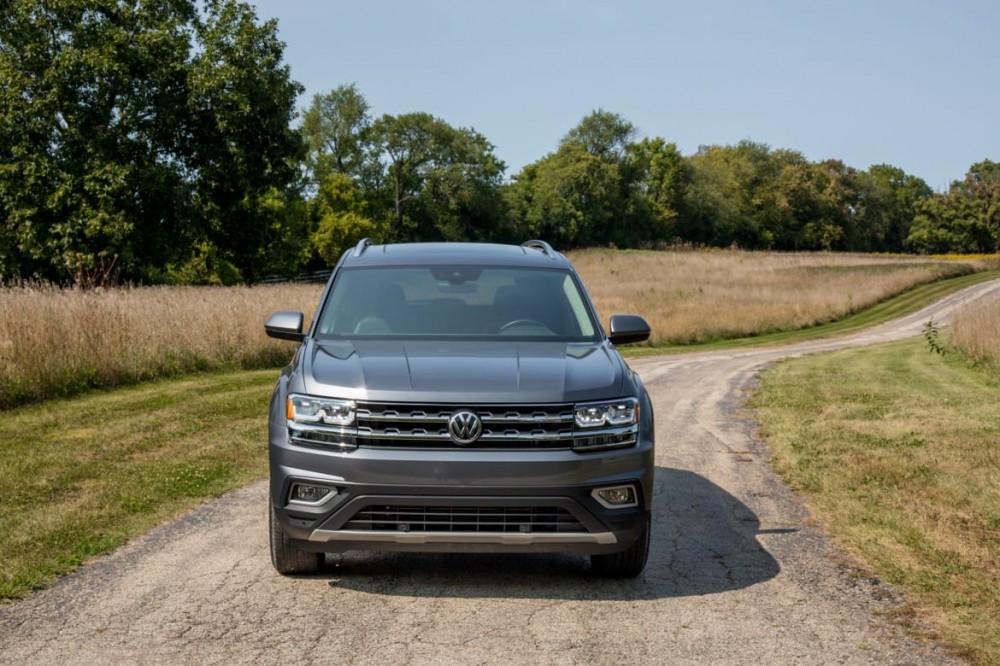
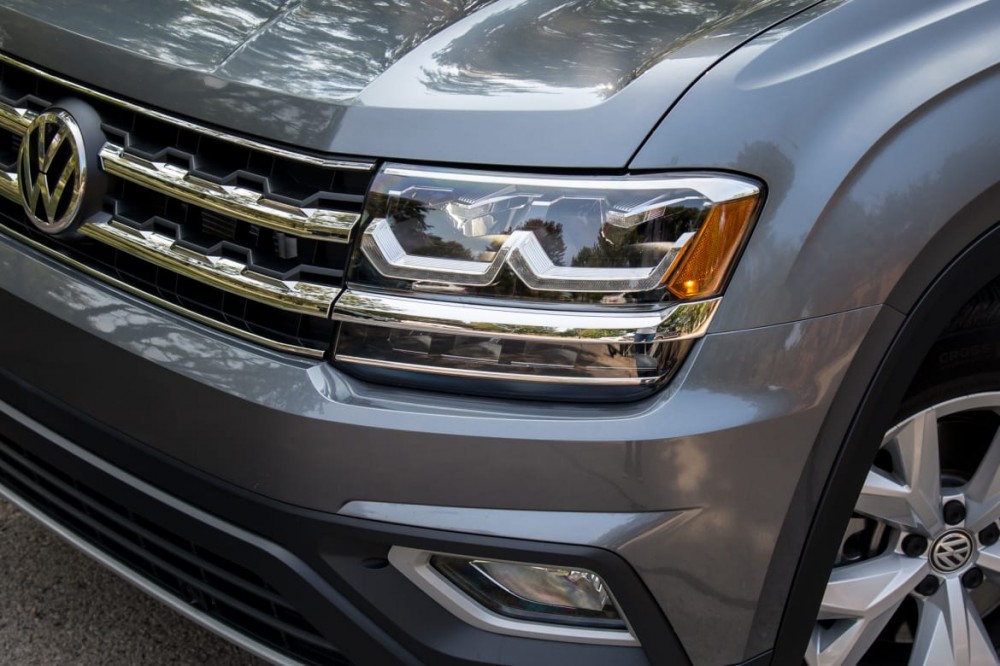
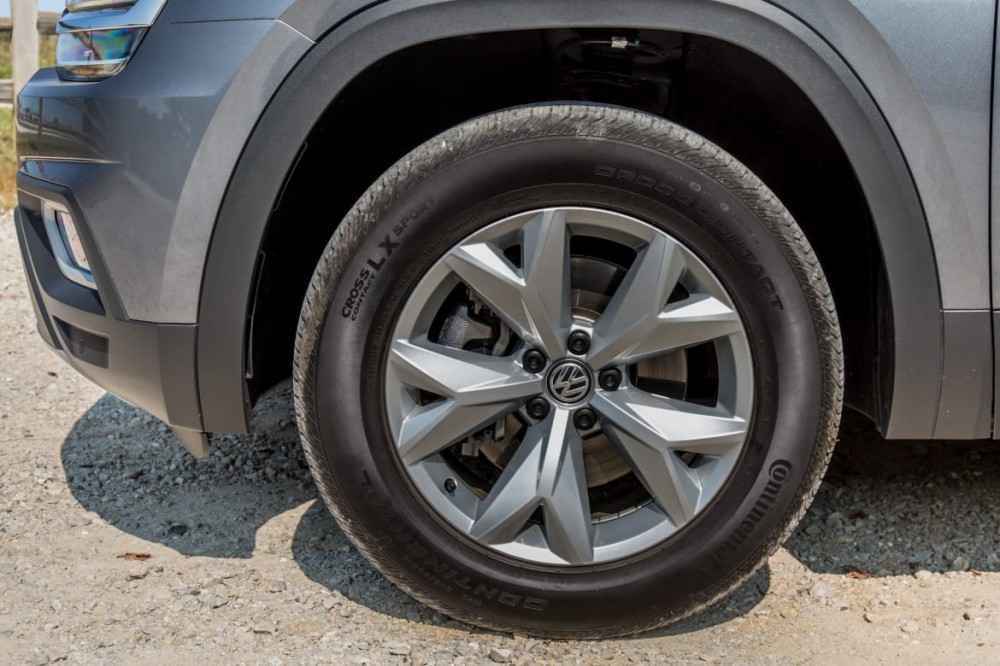
How It Drives
There are two engines available for the Atlas: The base engine is a 235-horsepower, turbocharged 2.0-liter four-cylinder that makes 258 pounds-feet of torque. Both models I drove were equipped with the optional 276-hp, 3.6-liter V-6 that makes 266 pounds-feet of torque. An eight-speed automatic is the only transmission. Front-wheel drive is standard, while all-wheel drive is available on V-6 models.
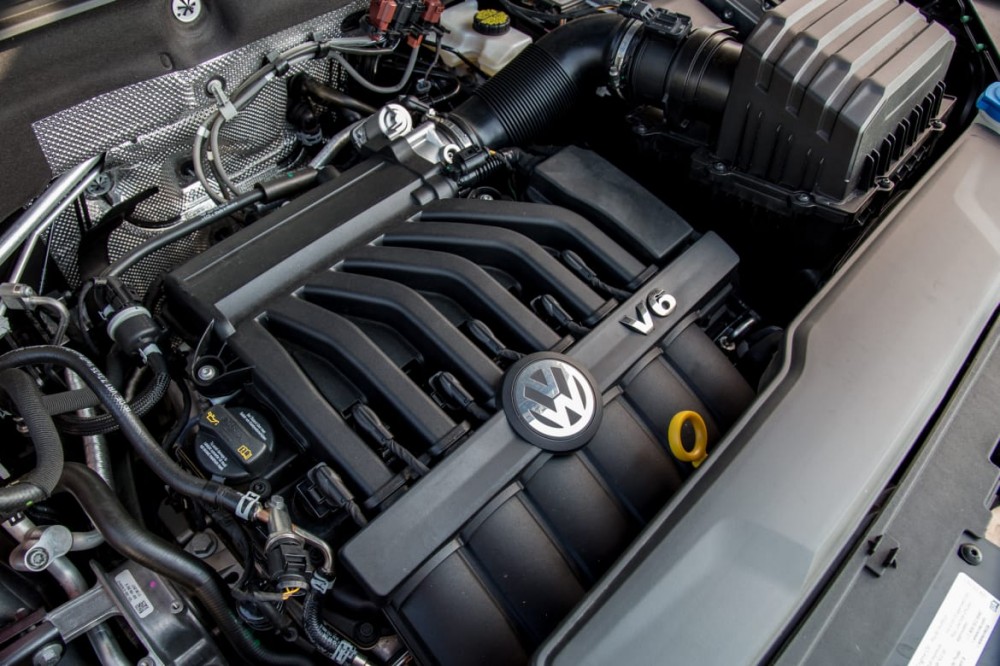
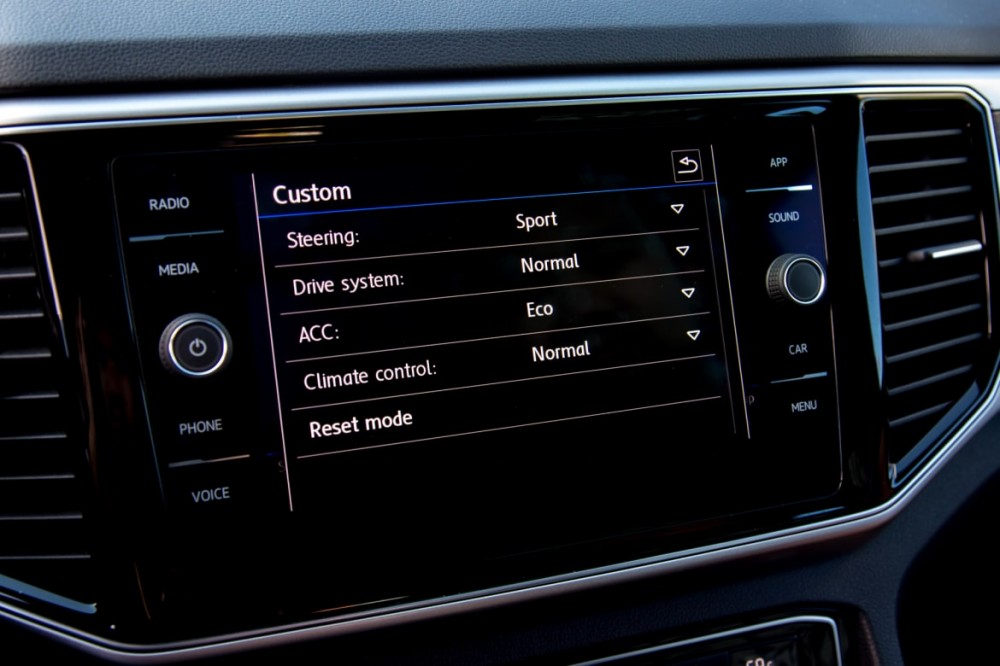
I found the V-6 to be underwhelming. It doesn't feel like it has quite enough oomph to propel the Atlas' considerable girth with ease. It strains a bit during merges and passing maneuvers, but I found the transmission to be a willing kickdown partner in those instances.
In her video review, fellow editor Jennifer Geiger faulted the Atlas' steering, saying it was too light on center — especially at speed, where keeping the SUV centered in its lane was difficult. I agree with her assessment; the steering wheel feels like it belongs on a smaller vehicle. However, thanks to the Atlas' individual drive settings, I found a happy medium: I set the steering to Sport, which adds some heft, while keeping the powertrain at its Normal setting (the accelerator is too twitchy in Sport).
Fuel-economy ratings vary widely by engine. Four-cylinder models are EPA-rated 22/26/24 mpg city/highway/combined, beating FWD V-6 models (18/25/20 mpg) by a fair margin. AWD V-6 models come in slightly behind that, at 17/23/19 mpg. Both engines use regular gasoline. These figures lag most of the competition: The Toyota Highlander with a V-6 engine and all-wheel drive gets an estimated 20/26/22 mpg.
Interior Room Galore
The Atlas' styling is very vertical. The sides seem to go up forever, and a sense of boxiness is the most prominent visual aesthetic of the whole package. Beyond looks, however, this approach clearly benefits cabin room for both cargo and occupants.
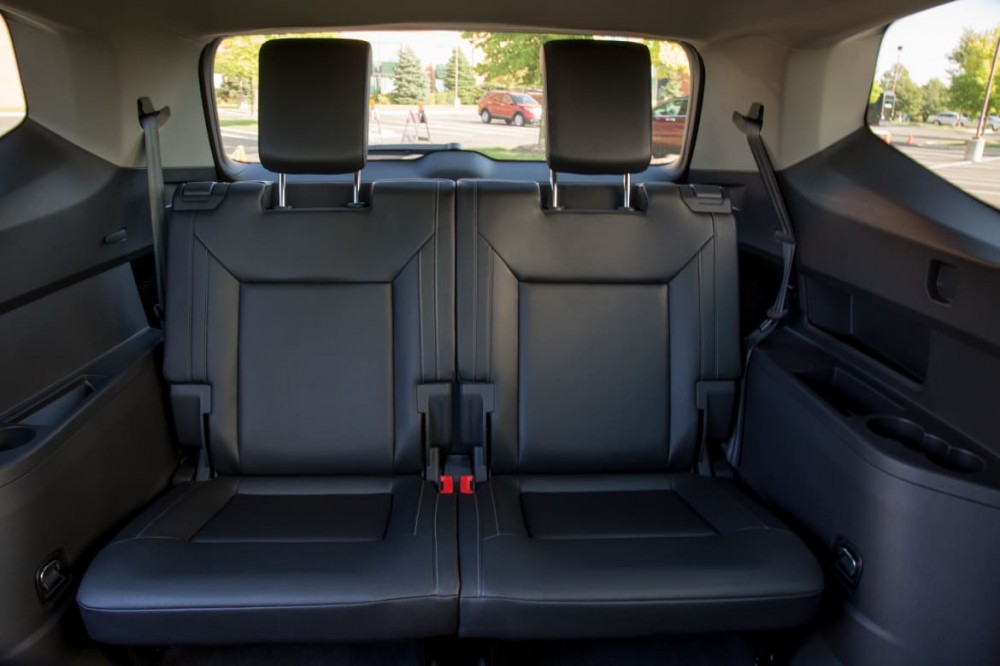
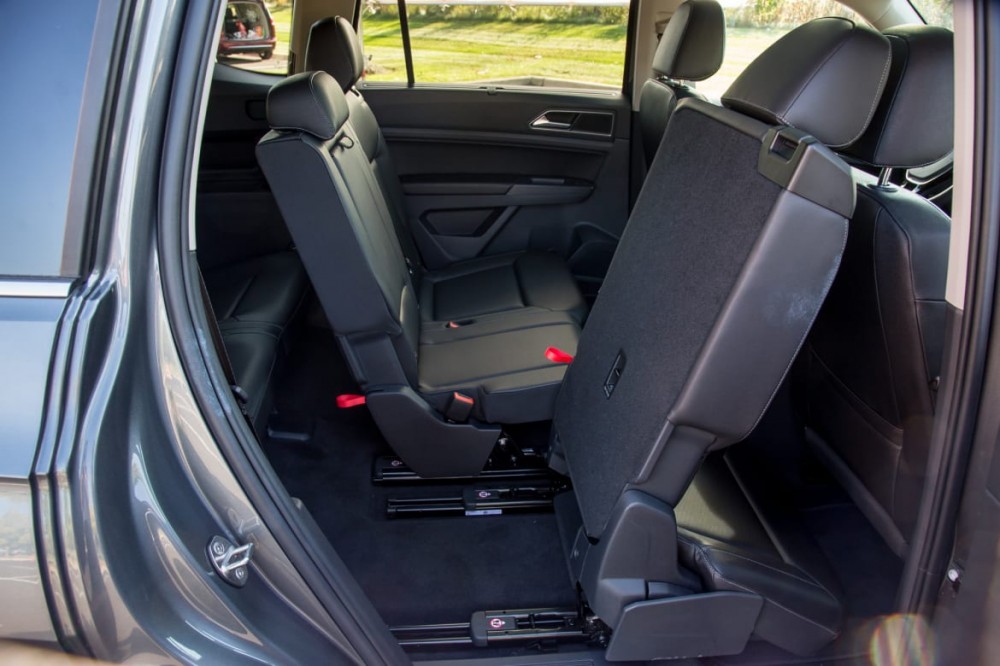
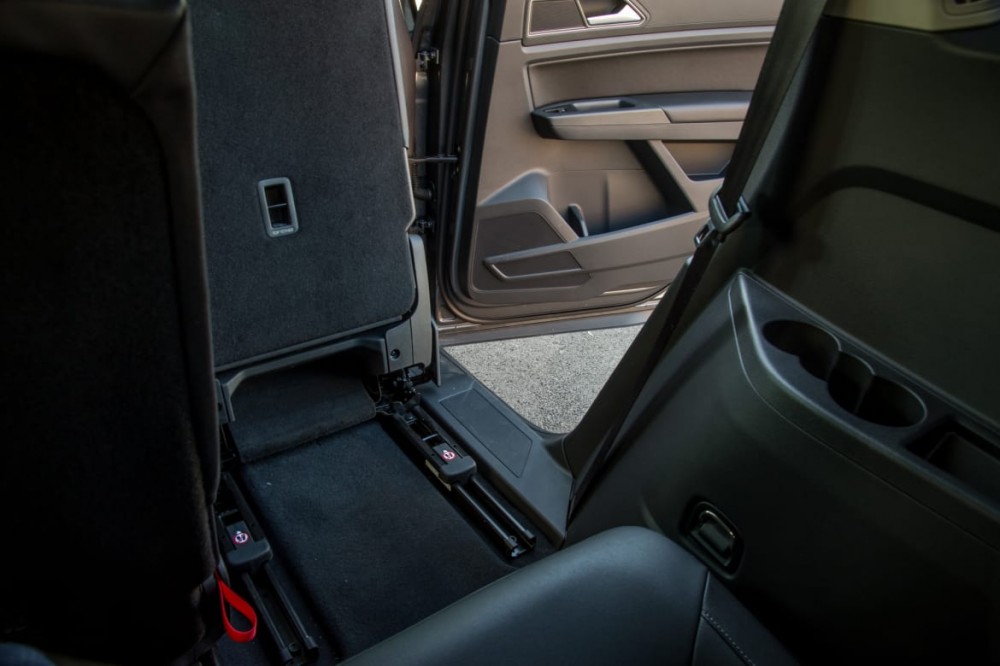
For occupants, the Atlas' interior feels expansive in a way that's uncommon for this class. While the third row especially tends to feel like an afterthought in many of the Atlas' competitors, it's spacious here and can comfortably fit adult passengers. This is thanks in large part to the second-row's flexibility: It has 7.7 inches of fore/aft adjustment, which allows passengers to negotiate for legroom. Both sides offer easy third-row access thanks to tilt-and-slide functionality that works even with a forward-facing child-safety seat installed. As an added bonus, the seat locks once you tilt it forward, providing a point of balance when getting in and out — a feature my rapidly aging knees much appreciated.
The second row is also extremely kid-friendly, with space for three child-safety seats across the second-row bench. It got straight A's in our Car Seat Check, earning it a spot on our Car Seat Honor Roll for 2017.
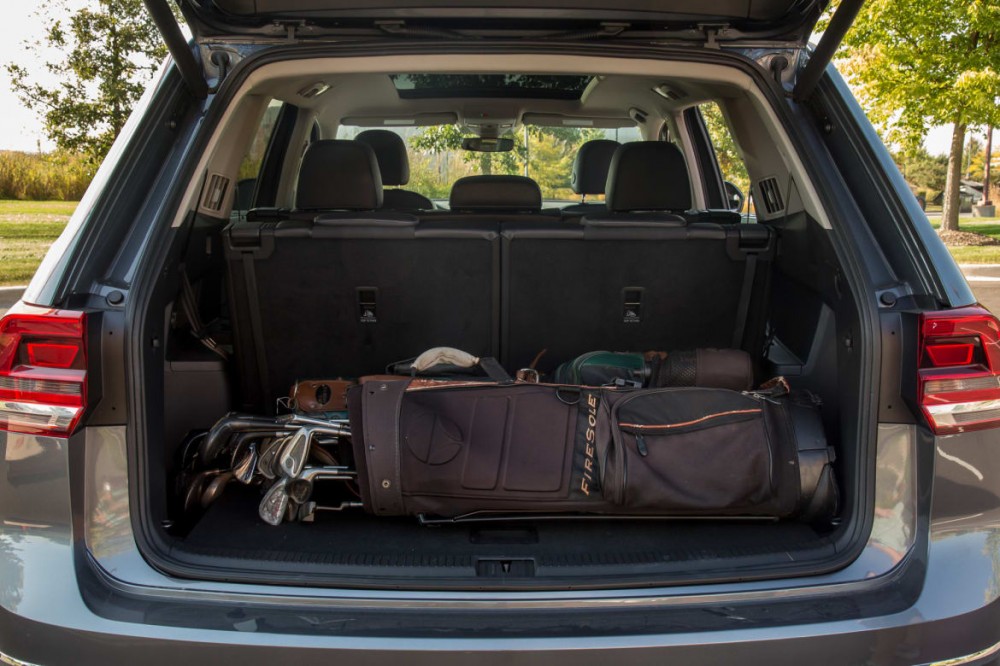
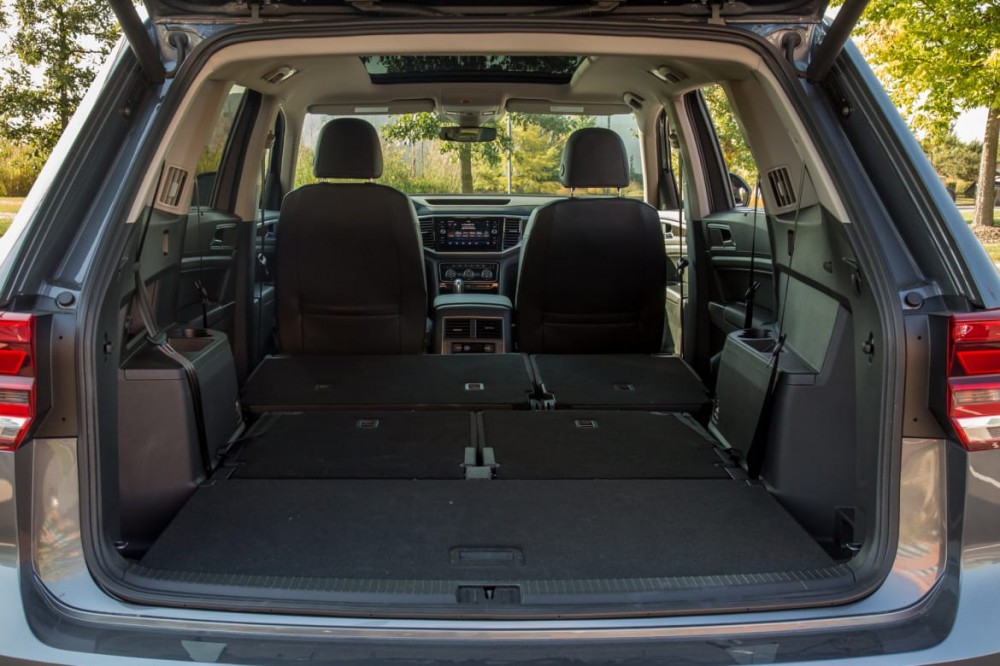
The Atlas offers 20.6 cubic feet of cargo room behind the third row, 55.5 cubic feet behind the second row and 96.8 cubic feet with both rows folded. If I had one nit to pick with the Atlas in regard to carrying cargo, it would be a lack of a hidden storage bin: There is a small spot under the rear cargo area to store small items, but a large purse or backpack won't fit. I'd like a bit more privacy back there as an alternative to the retractable cargo cover.
Screen Savvy
There are two touchscreens available on the Atlas: a 6.5-inch screen that comes only on the base S trim, and a larger 8.0-inch screen. I experienced only the larger of the two, and it's great. The screen has high resolution, is plenty bright even in sunlight and offers responsive menus. Volkswagen also did a good job with the graphics (the climate-control screen is particularly attractive). And in a great blend of old- and new-school features, there are both volume and tuning knobs flanking the touchscreen. Android Auto and Apple CarPlay are both standard regardless of screen size.
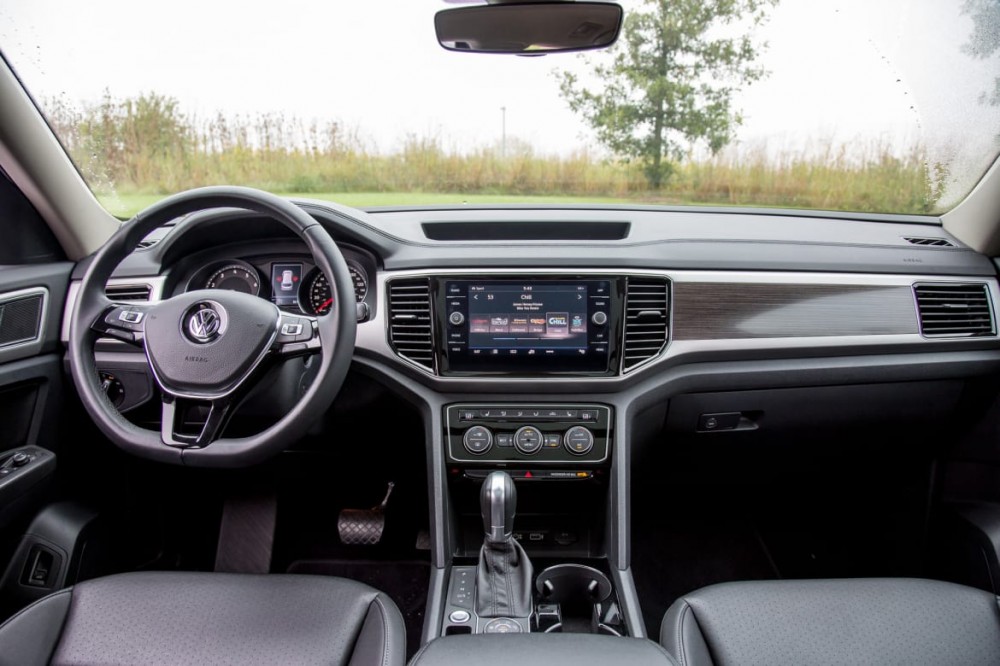
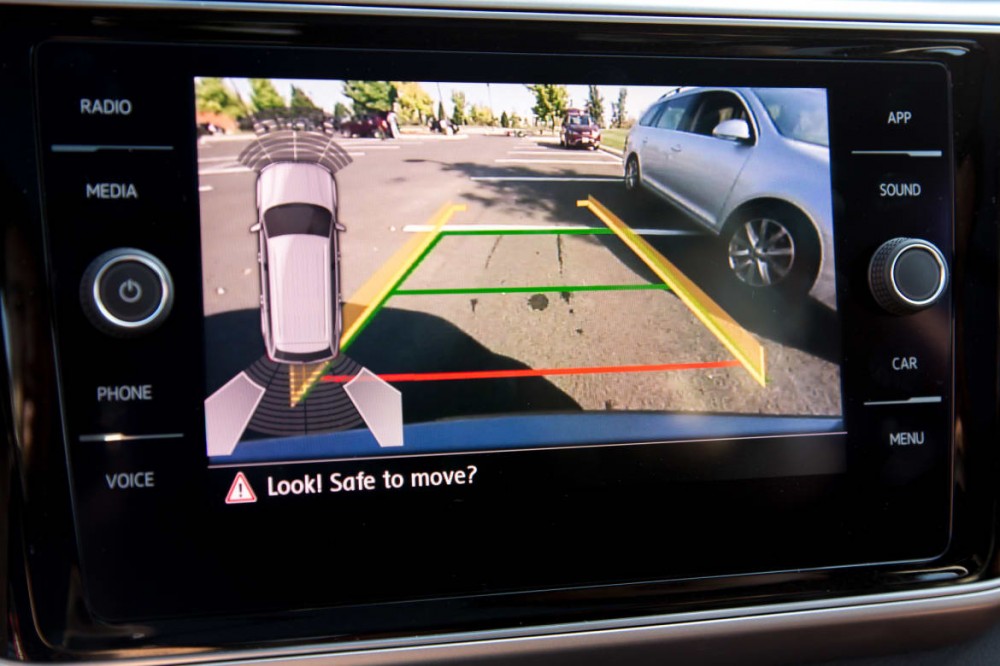
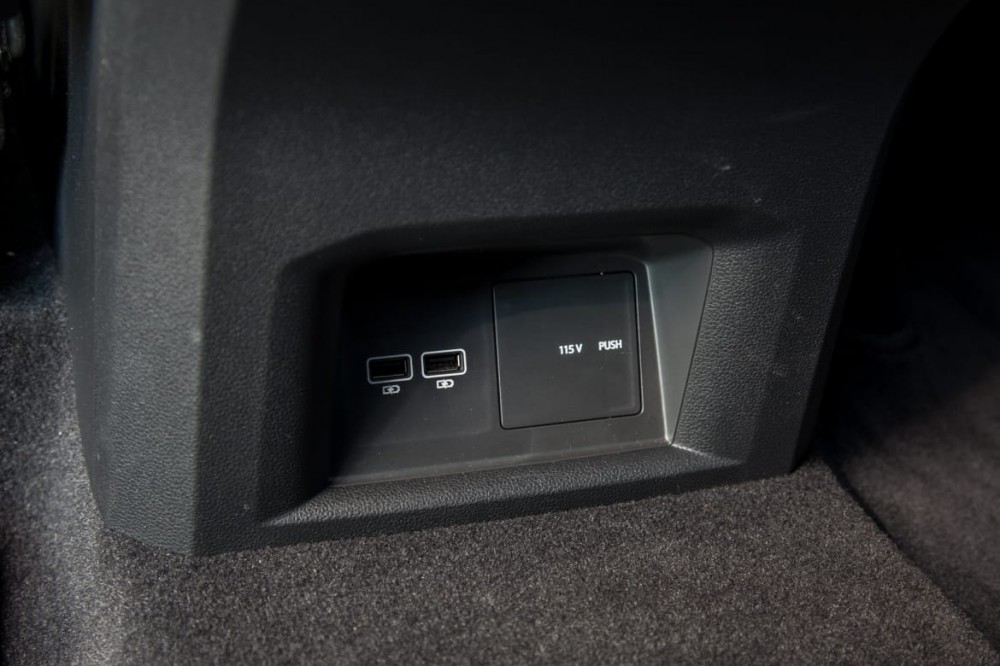
Volkswagen also offers its Digital Cockpit, which is similar to Audi's similarly named system: a 12.3-inch screen that replaces the traditional instrument panel behind the wheel. It's available only on SEL Premium models. Its graphical dials can shrink to reveal a large screen showing navigation directions or other driver information.
Two USB ports and a 12-volt power outlet are standard up front, and two USB ports on the center console are standard on SE and higher trim levels. SEL trims add a 115-volt power outlet to the back of the center console.
Safety Squeeze
The Atlas offers all the advanced safety features you expect on a new vehicle, including forward collision warning with automatic emergency braking, adaptive cruise control, front and rear parking sensors, and lane keep assist with lane centering. It even offers some extras, including a very good 360-degree camera system and an automatic parking system that works for both parallel and perpendicular parking spaces. The camera system can split the screen between a rear view and a 360-degree view, and either can be enlarged via a tap on the screen.
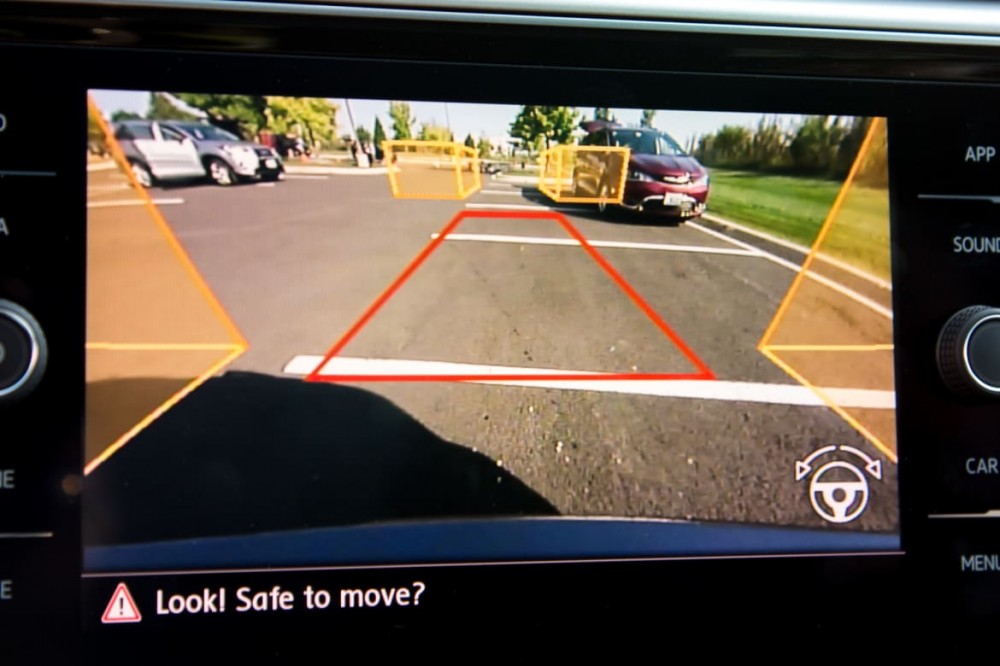
Safety should be trim-agnostic: Even if not all buyers want the features standard, a safer car should be available to them through options.
However, I find it disappointing that many of these features aren't available on lower trim levels. S models can't have any of the features mentioned above; it can't even have blind spot warning. To get those other features means bumping up to at least the SE. To be fair, the Atlas isn't the only vehicle in its class to do this (the Chevrolet Traverse is the biggest perpetrator). And excluding these features does keep the Atlas' base price down ($31,425 for a FWD, four-cylinder S model). But safety should be trim-agnostic: Even if not all buyers want the features standard, a safer car should be available to them through options, not just by bumping up to a more expensive trim.
Conclusion
The 2018 Atlas is very good at what it does, with a combination of interior versatility and easy-to-use technology that overcomes its average driving experience. If you're shopping for a three-row SUV and know you'll use the third row consistently (especially if you have a young child who requires a child-safety seat), the Atlas deserves a long, hard look. And Volkswagen has made things easier on the wallet, as well: The Atlas gets a six-year/72,000-mile bumper-to-bumper warranty.
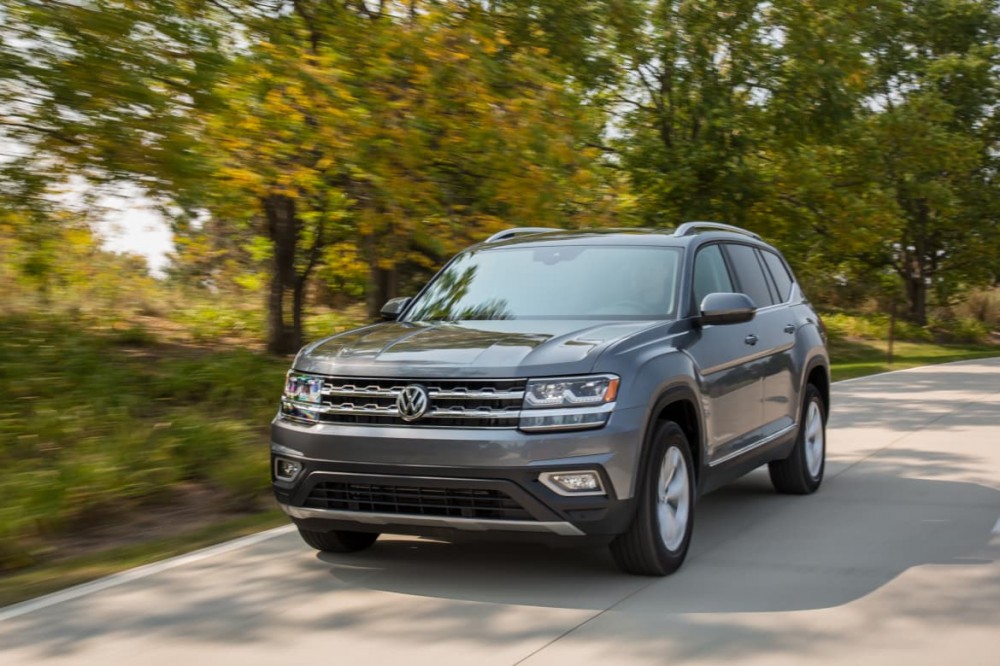
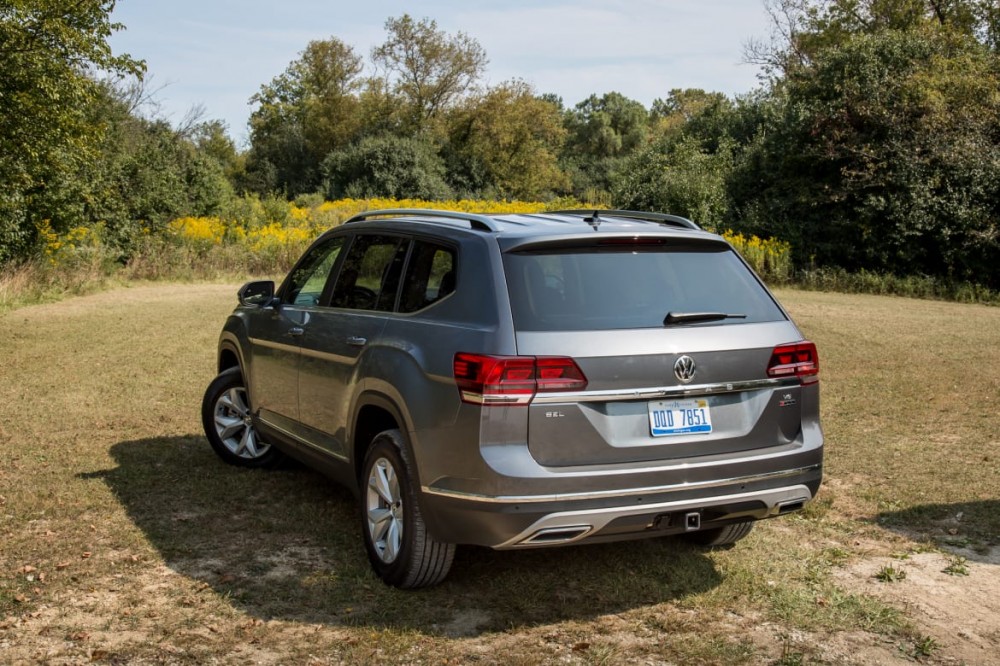


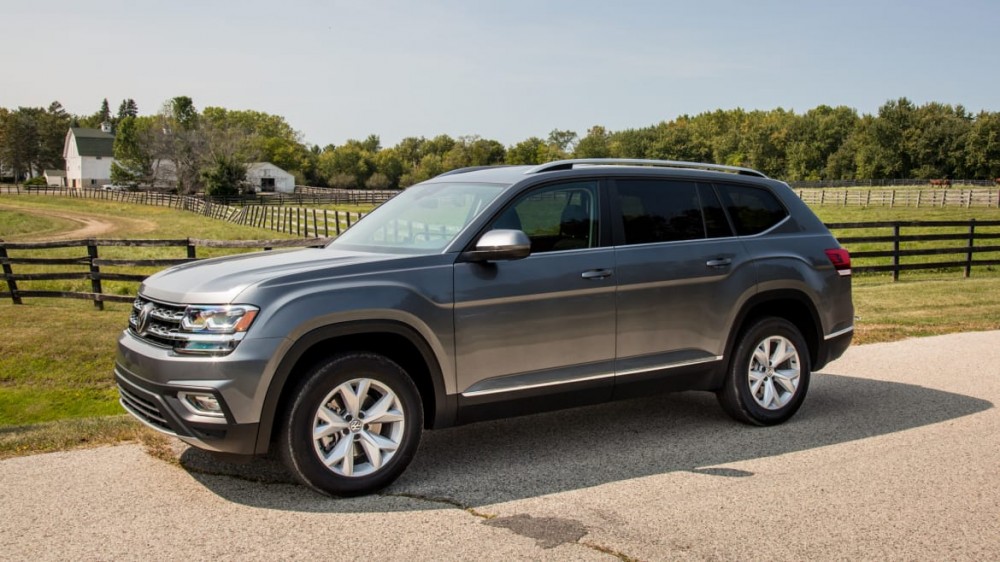
Leave a Reply